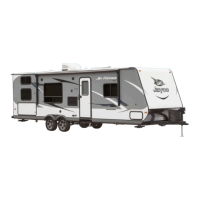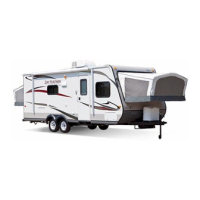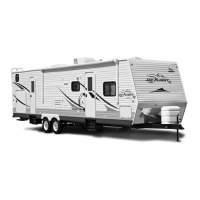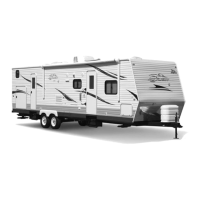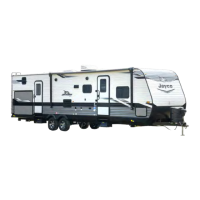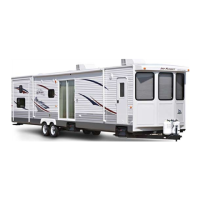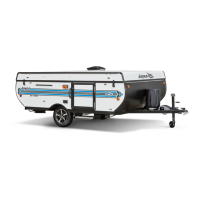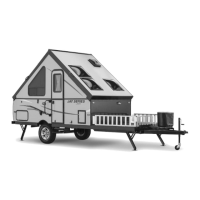WEIGHING INSTRUCTIONS
As your packing and loading routine becomes more familiar from experience, physically
weighing your trailer may not be necessary before each trip. While you are developing a
process, it is imperative that you verify compliance within the weight ratings. The
following process will aid with weighing your trailer. Keep in mind that each individual
scales and the surroundings will vary in usability.
To properly weigh your recreation vehicle, first weigh it including the tongue weight,
while detached from the tow vehicle. This actual overall weight must be less than or equal
to the GVWR for safe operation. If the overall weight is greater than the GVWR, some
contents must be removed until the actual overall weight is less than or equal to the GVWR.
Once the actual overall weight is determined and the recreation vehicle is within GVWR
limits, determine the following weights:
1. The weight of complete recreation vehicle, while attached, but excluding the tow
vehicle. This will result in the actual weight that is exerted on all of the recreation
vehicle tires. This weight may be subtracted from the overall recreation vehicle
weight (above) to determine actual “tongue” weight.
2. With the recreation vehicle still attached to the tow vehicle, each wheel position
should then be weighed separately to ensure each tire is not overloaded.
TO DETERMINE THE WHEEL POSITION WEIGHT:
• Pull the recreation vehicle onto the scale so only one tire is on the scale. Record the
weight. Your trailer must remain as level as possible on the scale (even though an
axle or side is not physically on the scale). Obviously, to obtain the side-to-side
weights, there must be enough space on either side of the scale to accommodate the
recreation vehicle being partially off the scale.
• To calculate the opposite side of the vehicle wheel position weight, subtract the first
side’s weight from the weight determined in step #1.
If there is a difference in the weights on one side of the vehicle as compared to weights on
the other side, components (tires, wheels, brakes, springs, etc.) on the heavier side could be
overloaded, even though the total axle load is within the GVWR. It is important to
redistribute the load to avoid component failure, to improve the handling characteristics of
the vehicle and to not void the warranty.
24 Jay Feather Conventional Travel Trailer
Before you travel...
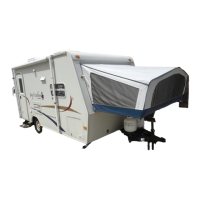
